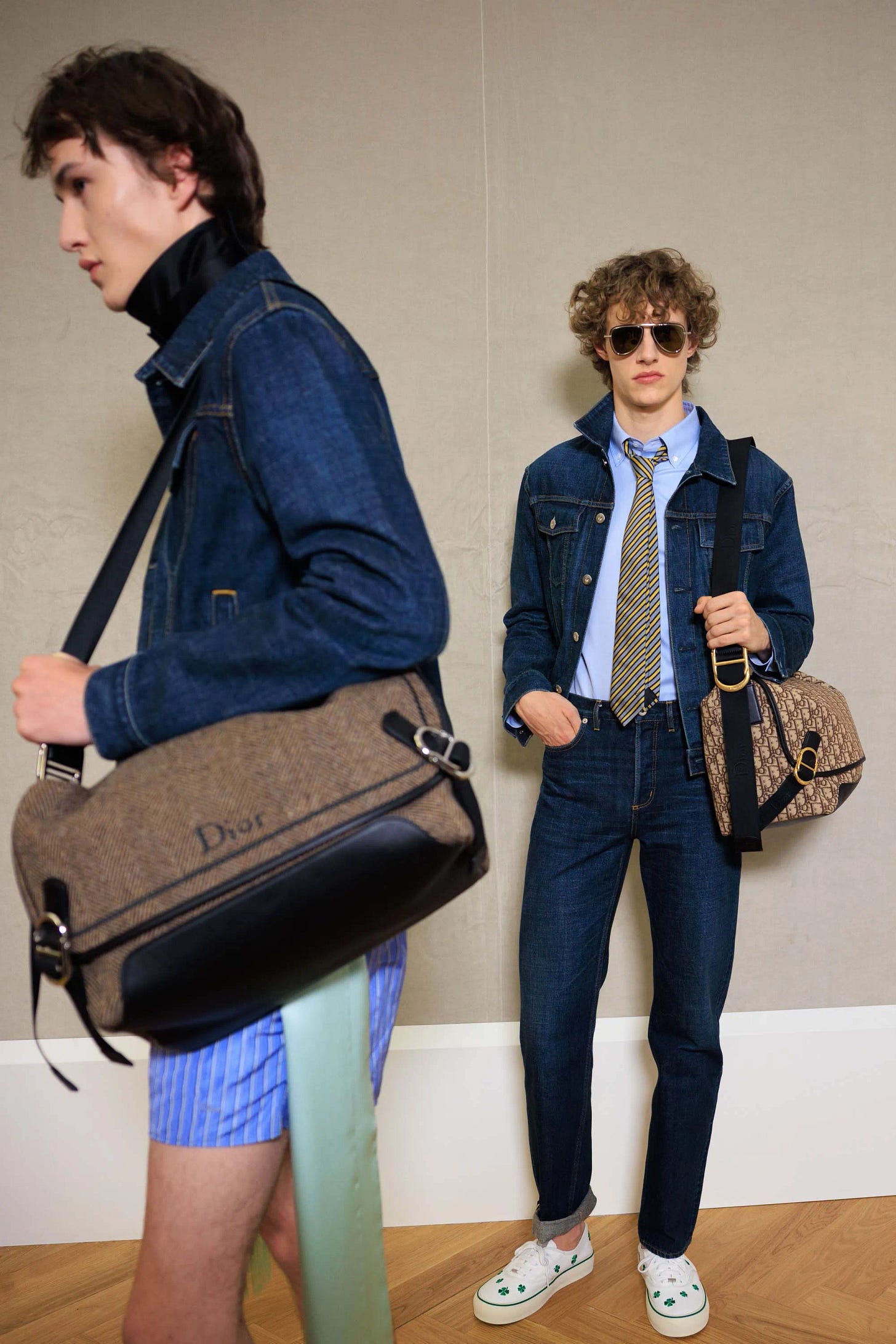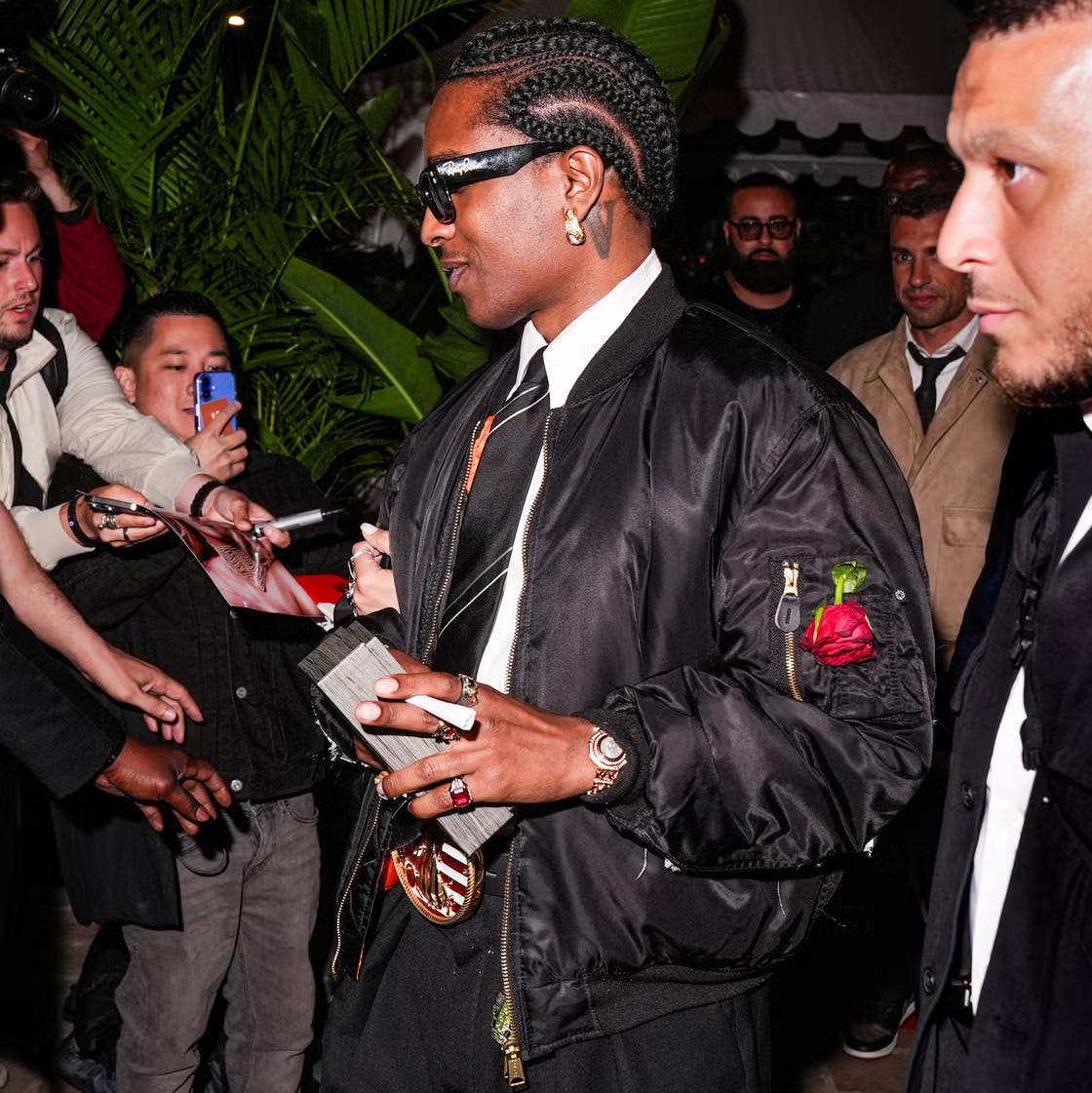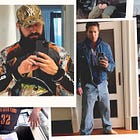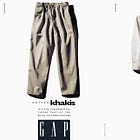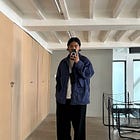It’s funny how these things unfold.
It started, for me, a few weeks back over iced tea with
, when he told me, almost conspiratorially, that he had … (sotto voce) purchased a vintage tie from Dior on eBay. I wrote about it then, that it struck me as a small, offhanded gesture that for some reason spoke volumes in our age of informality. Then, suddenly, I saw ties everywhere! I noticed take up the cause wholeheartedly, with his newfound Substitute Teacher-core look consisting of a button-up shirt tucked into loose pants worn with a tie, sans jacket. Noticing is a nice way to say he kept texting me photos of himself in said outfit, but I do have to admit that it does just look … right.Then, bam! Paul Mescal arrives in shirtsleeves and a tie to the premiere of a movie. Bam! The see-and-be-seen downtown retailer Colbo also starts posting about their ties on Instagram. Another bam! J.Crew dedicates an Instagram slideshow (real, not AI!) to their latest neckwear drop—paisleys and repp stripes and knits, paired lovingly with rumpled pinstriped Oxfords or natty corduroy shirts. Casual-cool Danish brand NN07 added a tie to their fall assortment as well. ASAP Rocky has been spotted wearing ties, including with a flight jacket(!). Anecdotally, I saw a guy in my neighborhood wearing a shirt-and-tie tucked into beat-up Dickies and Doc Martens, all topped off with a camouflage five-panel hat (Heartland Drag-adjacent).
Fashion Week hit the point home. Charles Melton wore one loosely done with leather pants and a trench to the Coach show while WWD style editor Alex Badia wore one with a jean jacket. Last night I went to the Prada party in Soho, and saw a handful of guys wearing them, including David Evan Ruff, who paired it with a track jacket. I bumped into my friend Bryant Simmons—he of the flip-flops—who said that he had started wearing a tie, usually styled loosely, paired with an oversized, untucked button-up, and loose jeans. Ties—they’re among us!
To make sure I wasn’t in the midst of some Mad Men-induced hallucination, I asked the folks at Google if there was any data to back this up, and, indeed, there was. In just the last month, they said, there had been a 150% increase in searches for the term “men’s designer ties,” and a 170% uptick in “Christian Dior tie” specifically.
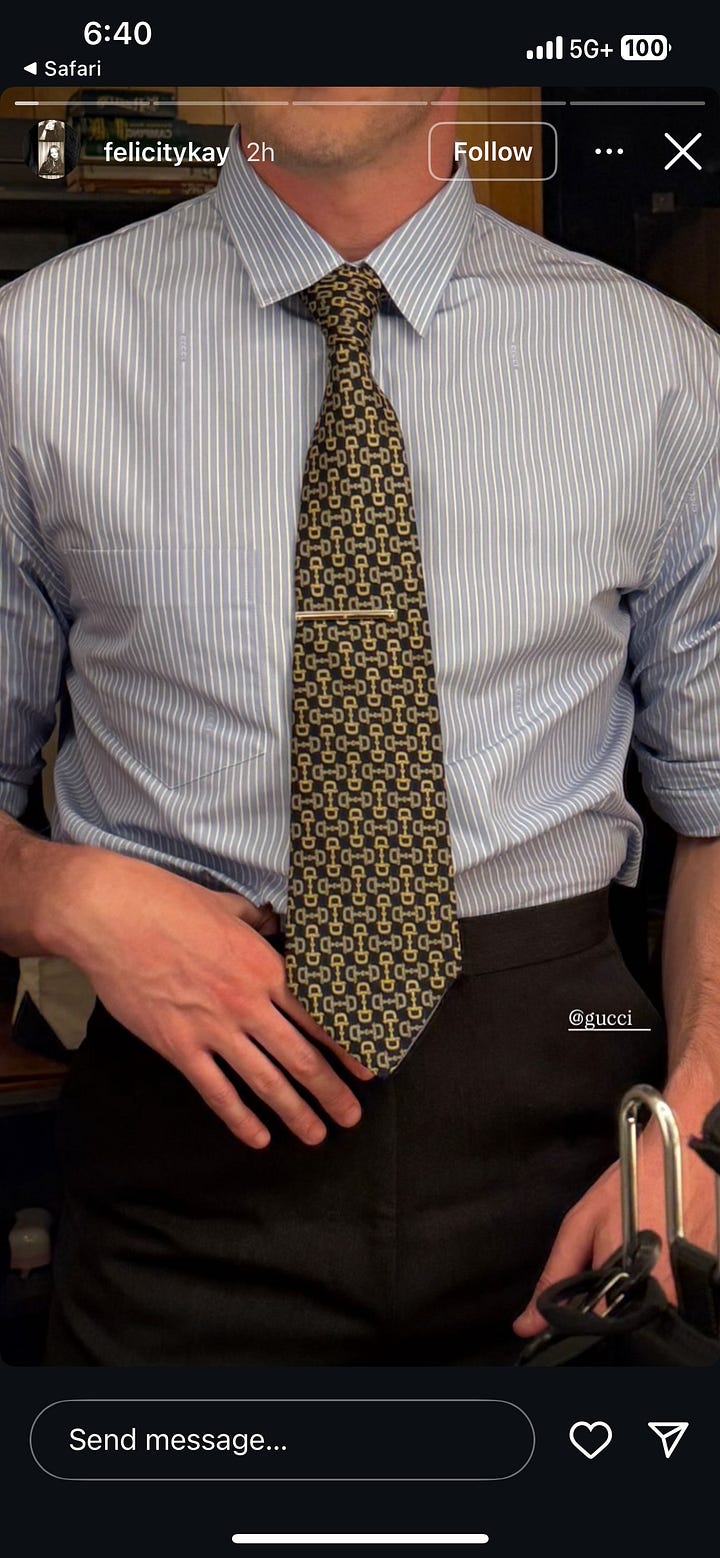

A tie is ”a statement of intentionality and personal style,” says Sagal Mohammed, Google’s creative and editorial lead for commerce. A shirt and a pair of pants, those garments are the bare minimum to exist in polite society. To wear a tie today, on the other hand, is an act of decoration, of calculation, of premeditation.
The necktie—which has had a chokehold, quite literally, on men’s fashion in some form since 1636, when King Louis XIII recruited Croatian soldiers to fight the Thirty Years War and admired the way they fastened their coats with a dash of colorful cloth, tied at the neck—has fallen out of favor of late, as anyone with two eyes can attest. It was hastened by Silicon Valley’s laissez-faire take on corporate uniforms: hoodies in lieu of suits, Adidas slides in favor of longwing brogues. On the dressier side was Steve Jobs, not in a collared shirt but an Issey Miyake mockneck sweater. Today, not even the toniest of banks or white shoe law offices require them. In 2022, the world went bonkers when not a single one of the world’s political leaders wore a tie with their suits at the G7 Summit. At last year’s Oscars, Hollywood’s last formal occasion, many men forwent their neckties. Last year the New Yorker declared the tie dead.
And yet, it’s not as moribund as previously reported! The tie is no longer a prerequisite but, instead, a totem of self-expression, a small piece of fabric that conveys something about your relationship to your socioeconomic class, your self-perceived status, your point of view! And if the current revival mostly exists amongst a small, concentrated cohort of tapped-in menswear enthusiasts, so be it. After all, isn’t it often in that crucible that more widespread trends are ultimately forged?
But why the sudden reversal? How did the tie go from life support to back-from-the-brink? Mohammed, of Google, thinks they’re a younger generation’s reaction to “minimalist casualwear,” and said that this summer’s Dior show, in particular, has done wonders to “re-legitimize the accessory, making it feel modern and cool again.” Just yesterday, GQ’s
profiled Jonathan Anderson of Dior, who said: “In a weird way, the brand is big enough to suddenly be like: ‘Ties are back.’” Anderson leaned heavily on ties in his first show, shown loosely done, worn backwards, or half over a shirt’s collar. It was rakish and haphazard. He explained further:“Because I hate ties, and I hate suits, and I’m in a brand that’s all about tailoring. So I was trying to work out, how would you get there and make it, like, appealing?”
The tie—once a symbol of the soul-crushing monotony and homogeneity of office life—is now being used as a vehicle for matters of style. Of flamboyance!? Will wonders never cease!?
“I think we’re in a moment where people want to reclaim pieces that once felt rigid or uniform and give them new energy,” says Brie Welch, a stylist who works with celebrities and as a consultant at eBay. “It used to symbolize hierarchy and conformity, but now it’s being styled with T-shirts, oversized knits, or even denim. It’s about twisting tradition into something personal.”
“A tie is an easy way to change an outfit completely,” says Victor Netland, a New York-based content creator who was first introduced to the tie life as a salesclerk at Paul Stuart. When the de facto male uniform was the staid two-piece suit, it was a small gesture of flair, of novelty. “You can wear the same navy suit with a white shirt with a different tie every day, and it changes the idea,” he said. “You can go for a little bit more formal, more casual.” He likes to wear his slightly undone, with the top button of his shirt unfastened, like a commuter from the 1950s coming home after a long day at the office. “There’s some style and nonchalance to it,” he says.
Netland estimates he owns around 100 ties and still wears them frequently. He often buys “lots”—groups of 20 or more, sold in bulk—of ties for very little on eBay, and told me of two of his current favorites: one with a repeating flower and heart motif, and another embroidered with blooms and a single bee. The latter one has a tag from a classic men’s haberdashery shop on Madison and 43rd, and the former was a collaboration between the brand Robert Talbott’s and a small, now-defunct store in Greenwich, Connecticut called Outdoor Traders. Indeed, some ties can act as a history lesson of the foregone world of traditional men’s clothiers.
“This newfound interest in dressing up is about a new generation discovering their own version of the power dressing associated with the yuppies of the 1980s,” says Nick Paget, a senior strategist covering menswear for the trend forecasting firm WGSN. “But this time around, it’s as much about upcycling vintage pieces and feeling like the best version of themselves as it is about affecting the wealth and status they aspire to but don’t yet quite have.” As I mentioned in a piece about “Old Money Style” for GQ, there’s an interesting tension at play when, as wealth disparity grows ever wider, Gen Z has started cosplaying an old-fashioned version of looking “rich”. Or, as Paget says, “There’s a knowing irony in the mix.”
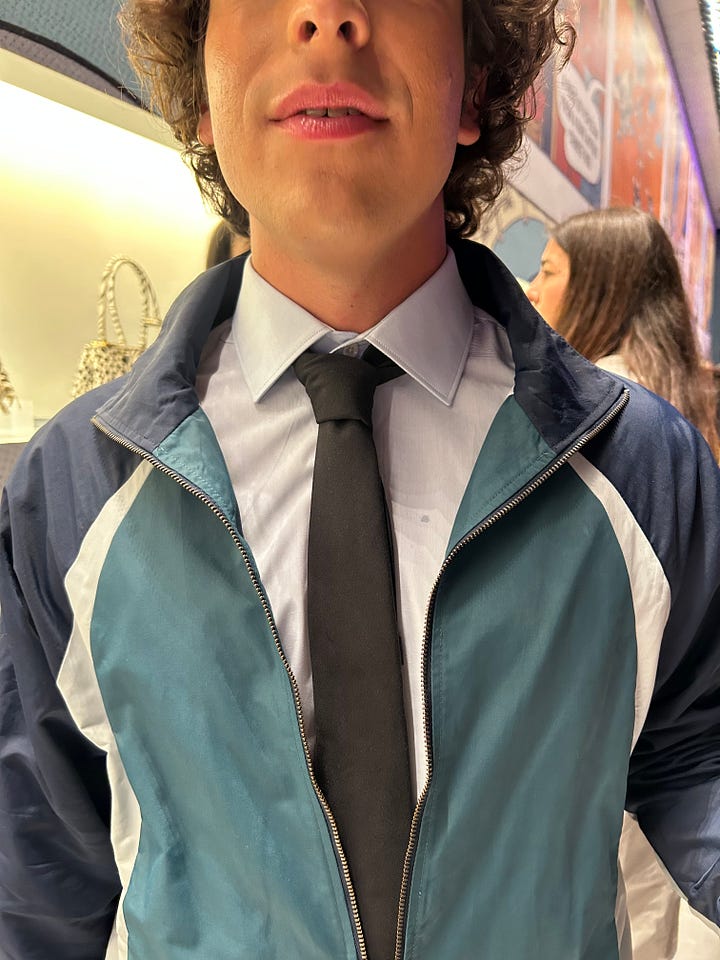
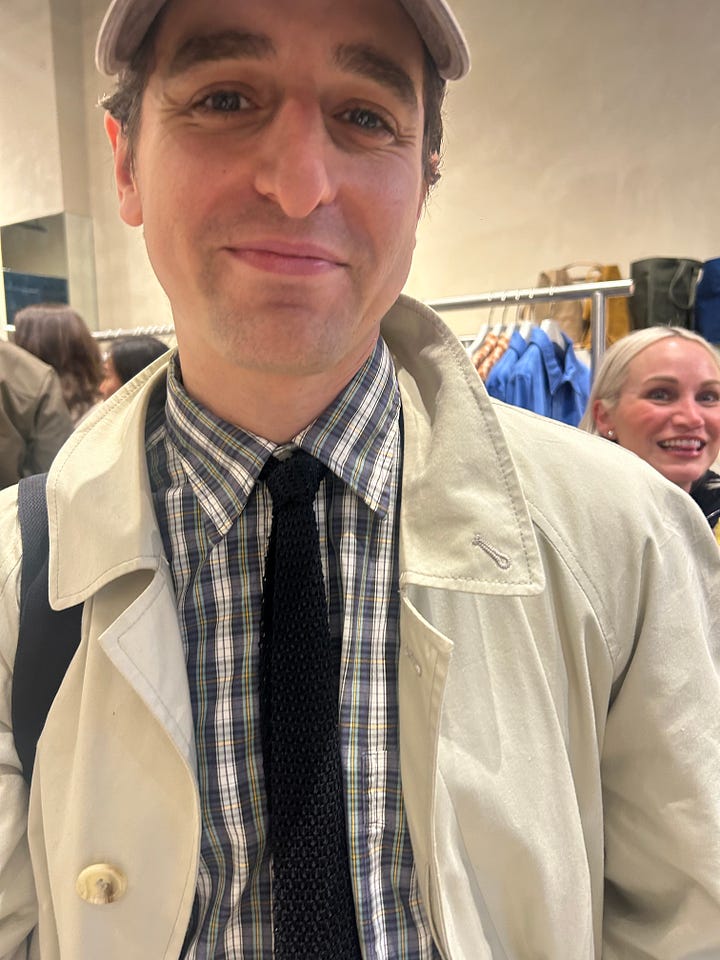
As C-suite execs start demanding workers return to their cubicles in earnest, it’s perhaps no surprise that an interest in classic officewear has gained traction. Paget points toward the “officecore” trend on TikTok, which, as of me writing this, has upwards of 57 million views. “After years of sweats and sneakers dominating, there’s a real hunger for pieces that feel considered, intentional, and even a little sharp,” Welch says. “It doesn’t mean everyone is suddenly in three-piece suits, but it does mean elements of tailoring—ties, structured jackets, crisp trousers—are re-entering the conversation in a way that feels refreshing rather than restrictive.”
In addition to this summer’s Dior show, Michael Rider’s first Celine show also featured ties. I’ve already written about these two brands in connection to what I’m calling the New Normal, which is not “prep” per se, but more workaday. It’s a response to the cocooning shapes and rarified fabrics of “Quiet Luxury”— designed to be enigmatic, erudite, tasteful in a pretentious way. This is, instead, plainspoken, unaffected, instantly understandable. The balm of familiarity and, even, tradition.
“People are very interested in vintage Ivy style, vintage banker style,” Netland told me. “There are none of the barriers to entry as with high fashion or with luxury brands. You can literally go to the store and find a beautiful silk tie for two dollars.”
I agree that there’s an economic factor at play. As luxury prices spiral out of control and customers pull back on spending, brands are finding ways to give consumers an amuse-bouche of their wares. Bloomberg recently wrote about thousand-dollar bag charms as a “little luxury” for weary shoppers. While neckties—and charms—may be fancy Labubus that don’t do a ton for a label’s bottom line, they do serve as advertising and a way for shoppers, in some ancillary way, to participate in a brand’s larger ecosystem, in the same way that fragrance and cosmetics do.
Part of the allure of the tie is in its ease of use: wear it with a suit, tied around the neck, likely in a four-in-hand or simple knot. Today, however, younger men are upending these rules, wearing them loosened, without a suit jacket, tucked into their waistbands, slipped into their shirts, worn with leather jackets or chore coats—anything goes. In a tie-less world, to wear one is an act of defiance. “There’s a bit of rebellion to wearing a tie now,” Netland told me. “It used to be a way to conform, and now it’s like ‘Oh, you’re wearing a tie because no one else is wearing one.’”
Netland told me about one of his best-performing videos, where he tucks his tie into his shirt, to both recreate the styling at Saint Laurent’s spring 2026 show and … avoid dragging his tie through his lunchtime salad. “I don’t want it to get dirty,” he says. And yet there’s something paradoxical—the functional necessity of tucking away an ornamental accessory which, in fact, is impeding his daily routine to a degree. “Ties are a funny thing,” he says. “They’re unnecessary. There’s no function to them.”

